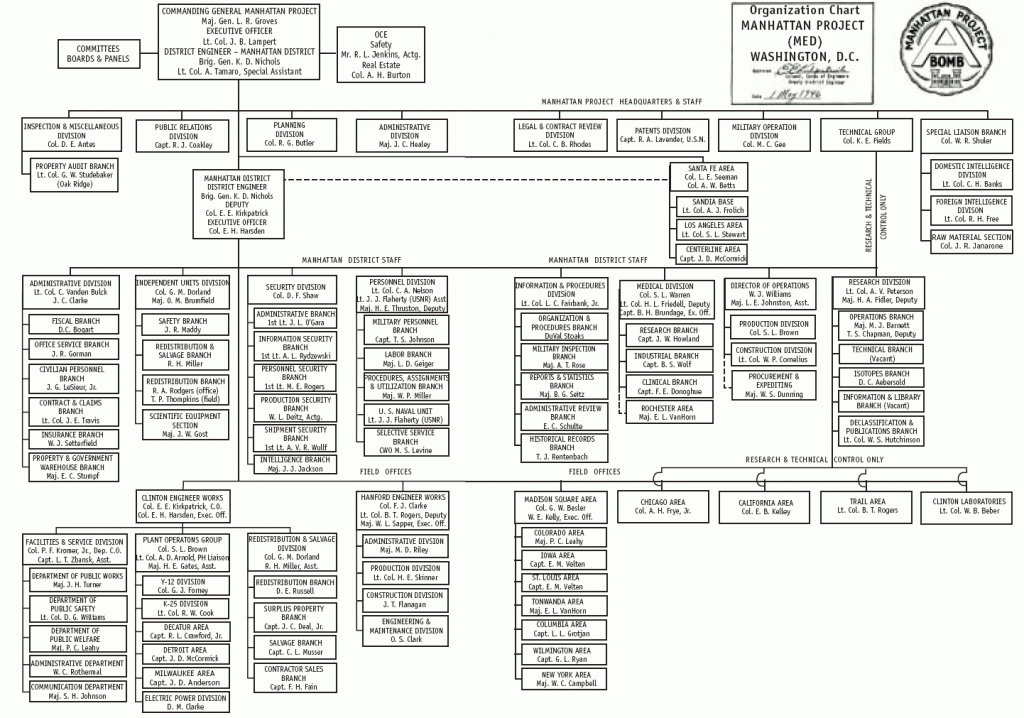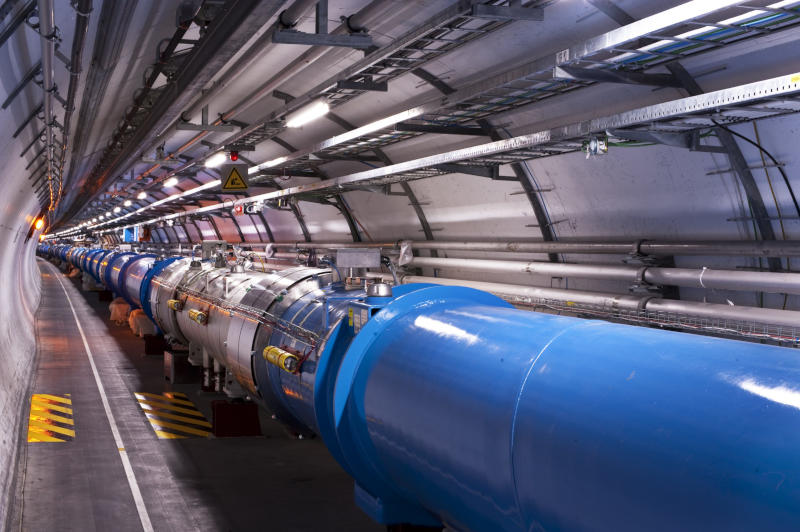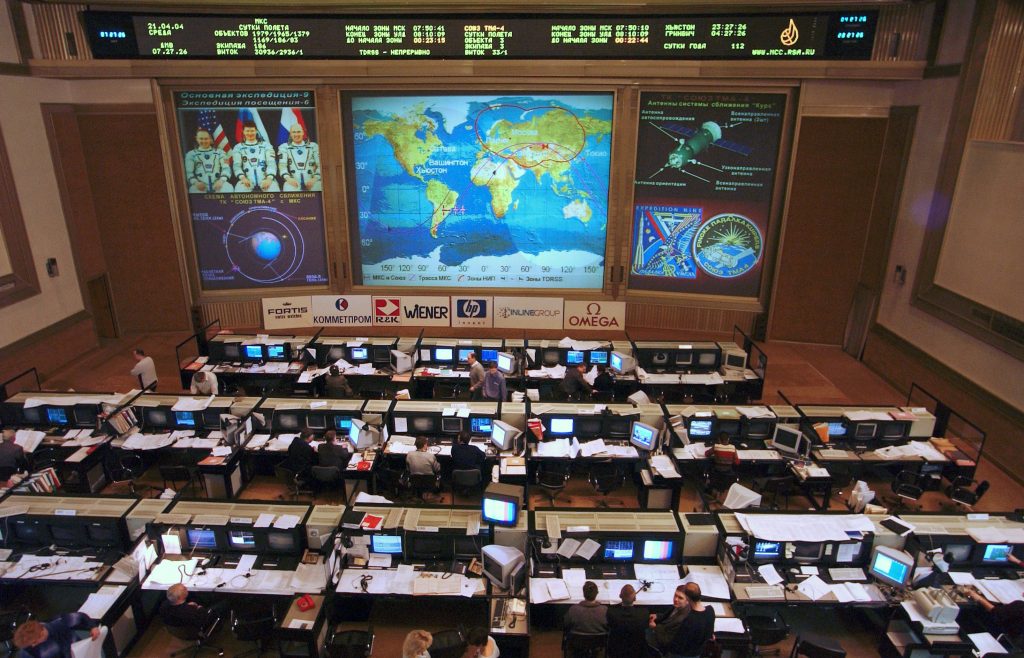—Definition, characteristics and examples of Big Science.—
Historical studies on science, medicine and technology show how scientific and technological activity has been transformed over time. For example, from the second half of the nineteenth century, scientific research ceased to be the occupation of a small group of scholars and finally became a professional practice, as has been seen in another section. The twentieth century saw a sharp increase in the number of science and technology professionals, together with a great increase in scientific production. Science and technology grew by leaps and bounds, becoming bigger and bigger, as did the tools used to deepen understanding of how nature works. Even the very concept of a scientific instrument had to be redefined. Far from those ‘brass theorems‘ that until the nineteenth century had been the main protagonists of scientific practice, the new tools used to research the behaviour of nature were transformed into complex technological systems that required new facilities and infrastructures, as well as greater economic and personnel resources. A symbol of a new era.

Manhattan Project organization chart. Wikimedia.
Scientific activity became a specialised and hierarchical work, subjected to increasing bureaucracy. In the field of scientific and technological research, a knowledge generation model was installed, based on the production models characteristic of the industrial world and mainly financed by the State. Thus, throughout the twentieth century, a whole series of interdisciplinary projects of great complexity and great dimensions were developed and consolidated in the field of research, in which the collaboration of numerous scientists and technicians from different backgrounds was necessary. A good sign of this are some of the best known efforts in the field of scientific and technological research of the last century: from the Manhattan Project to the Large Hadron Collider (LHC) of the European Organization for Nuclear Research (CERN), through to the Hubble space telescope or the Human Genome Project. Among the most recent and outstanding results of this type of collaboration are the observations of the Higgs boson, the elementary particle that was missing to be able to complete the standard model and which explains the mechanism by which the mass of particles originates. The Higgs boson was first detected in 2012, after more than twenty years of efforts by the scientific community, in two large experiments conducted at the LHC. The success of these experiments was possible thanks to the construction and operation of devices of unprecedented complexity and performance in the field of high-energy physics and the results were published in two reference studies, each of them signed by about three thousand authors.

LHC tunnel (CERN). Wikimedia.
From a historical point of view, it was the development of the US space programme by the National Aeronautics and Space Administration (NASA) that, in the 1960s, established the term Big Science as a category to refer to those projects that required large-scale organisation, a high budget and complex technological instruments or devices to be able to be carried out. Not to mention other aspects crucial to their development, such as the role of media and military interests. Indeed, the press, radio and television were (and still are) essential in fostering public and political support for these projects. A good sign of this is the practice that seems to have been installed when communicating the achievements and findings of these large-scale projects, through massive press conferences, unusual in scientific research on another scale. On the other hand, national security has been part of the discourse that has underpinned research, development and innovation, even being used to justify projects that did not have direct military applications. For all these reasons, the main features of megascience are usually summarised in the so-called “five Ms”: money, manpower, machines, media and military. These aspects do not have to appear equally in all the projects that one can identify as Big Science, but they have played an important role in many of them.

Russian Federal Space Agency Flight Control Room in Korolev (Russia). Wikimedia.
The perception that scientific activity had changed significantly with the implementation and consolidation of this type of project, at least in certain fields, led different authors to raise the idea that Big Science was the essential scientific experimental practice of the twentieth century, with a series of characteristics that would distinguish it from the way in which science had been practised previously. Among these, would also be included, for example, the difficulty of distinguishing between basic and applied research, as evidenced by various historical studies on the development of physics after the Second World War.
However, some of the controversies that have arisen from the use of the term Big Science as a historiographic category cannot be ignored. First, the term seems to be defined as opposed to what might be called minor science, that is, a science of small size that, although apparently requiring fewer resources and infrastructures, has undoubtedly contributed and contributes significantly to the scientific and technological development. Closely related to this vision is the perception that the success of these major projects makes it easier for bureaucrats to impose priority lines of research without having to pay attention to the exchange of ideas of the scientific community.

Radio telescopes at Mullard Radio Observatory at Haslingfield, Cambridge. Unsplash.
On the other hand, despite the fact that the label Big Science is usually employed to refer to those projects that involve a large mobilisation of human and economic resources developed since the Second World War, the truth is that various civilizations previously undertook large-scale scientific projects, such as the Museum of Alexandria (in the third century B.C.) or the House of Wisdom in Baghdad (in the ninth century). Among all scientific disciplines, astronomy may have been one of the most likely to develop large collaborative projects, funded by political powers, as shown by the creation of the Ulugh Beg Observatory (1394–1449) in Samarkand in the fifteenth century and, in the sixteenth century, the establishment of Uraniborg on the island of Hven, the place where Tycho Brahe (1546–1601) developed much of his research. Other initiatives, such as the cataloguing and mapping of the positions of millions of stars in the Astrographic Catalogue and the Carte du Ciel in the nineteenth century, also highlight the magnitude and ambition of some large-scale cooperative projects related to this discipline. All this without forgetting the ethical issues and problems that derive from these types of initiatives. Thus, the question is, in projects so large and with so many participants, who is ultimately responsible for the success or failure of a project and/or its consequences? What responsibility do scientists and engineers who simply carry out their work in the scientific knowledge production chain have?

View of Uraniborg included in Atlas Maior (1665). Wikimedia.
In any case, the study of what we call Big Science remains relevant from both a historical and sociological point of view, as it allows us to delve into aspects such as the role that commercial interests play in the development of scientific and technological activity, the need for intellectual autonomy that allows the scientific community to choose the different areas on which to carry out research or the ethical and social responsibilities of those who are dedicated to science and technology.
Pedro Ruiz-Castell
IILP-UV
How to cite this paper:
Ruiz-Castell, Pedro. Big Science. Sabers en acció, 2021-02-17. https://sabersenaccio.iec.cat/en/big-science/.
Find out more
You can find further information with the bibliography and available resources.
Recommended reading
Barona Vilar, J.L. Salud, tecnología y saber médico. Madrid: Ed. Fundación Ramón Areces; 2004.
Barona Vilar, J.L. La Medicalización del Hambre. Economía política de la alimentación en Europa. Barcelona: Akal; 2014.
Cooter, R.; Pickstone, J. (eds.) Companion to Medicine in the Twentieth Century. London and New York: Routledge; 2003.
Elias, N. The Civilizing Process. Sociogenetic and Psychogenetic Investigations. Revised edition. Oxford: Blackwell; 2000.
Foucault, M. “L’incorporation de l’hôpital dans la technologie moderne”. In: Dits et écrits. Vol. 2, Paris: Gallimard; 2001, pp. 508-521.
Studies
Barona Vilar, J.L. The Problem of Nutrition. Experimental Science, Public Health and Economy in Europe 1914-1945. Brussels: PIE Peter Lang; 2009.
Barona, J.L.; Bernabeu Mestre, J. La salud y el estado. El movimiento sanitario internacional y la administración española (1851-1945). Valencia: PUV; 2008.
Bernabeu-Mestre, Josep; Barona, Josep L. (eds). Nutrición, Salud y Sociedad: España y Europa en los siglos XIX y XX. Valencia, PUV/Seminar of Studies on Science, 2011.
David, H. (ed.) From Abortion to Contraception: A Resource to Public Policies and Reproductive Behavior in Central and Eastern Europe from 1917 to the Present. Santa barbara: Greenwood; 1999.
Foucault, M. “La naissance de la médecine sociale”. In: Dits et écrits. Vol. 2, Paris: Gallimard; 2001, pp. 207–221.
Hüntelmann, A. C.; Vossen, J.; Czech, H. (eds.) Gesundheit und Staat: Studien zur Geschichte der Gesundheitsämter in Deutschland, 1870 – 1950. Husum: Matthiesen Verlag; 2006.
Laqueur, Th. Making Sex. Body and Gender from the Greeks to Freud. Boston: Harvard University Press, 1992.
Pestre, D. Science, argent et politique. Un essay d’interprétation. Paris, Editions Quae, 2003.
Rodríguez-García, M.; Rodogno, D.; Kozma, L. (eds.) The League of Nations’ Work on Social Issues: Visions, Endeavours and Experiments. Geneva: United Nations Publications; 2016.
Other sources
Grande Covián, F. La alimentación en Madrid durante la Guerra Civil (estudio de la dieta suministrada a la población civil madrileña durante diecinueve meses de guerra, agosto 1937 a febrero 1939). Madrid: Publicaciones de la Revista de Sanidad e Higiene Pública; 1939.
Pardo Regidor, A. Segunda Conferencia de Bruselas (1º al 6 de septiembre de 1902) para la profilaxia de la sífilis y enfermedades venéreas, bajo el patronato del gobierno belga. Memoria presentada al Excmo. Ayuntamiento de Madrid por el Delegado del mismo en la citada Conferencia… médico primero por oposición del Beneficencia Municipal. Madrid: Imprenta Municipal; 1904.
Voit, C. von. Food and the Principles of Dietetics. London; 1927.
Wartime rationing and consumption. Geneva, league of Nations, 1942.
World Food Survey. Rome: Food and Agriculture Organization (FAO); 1952.



